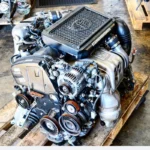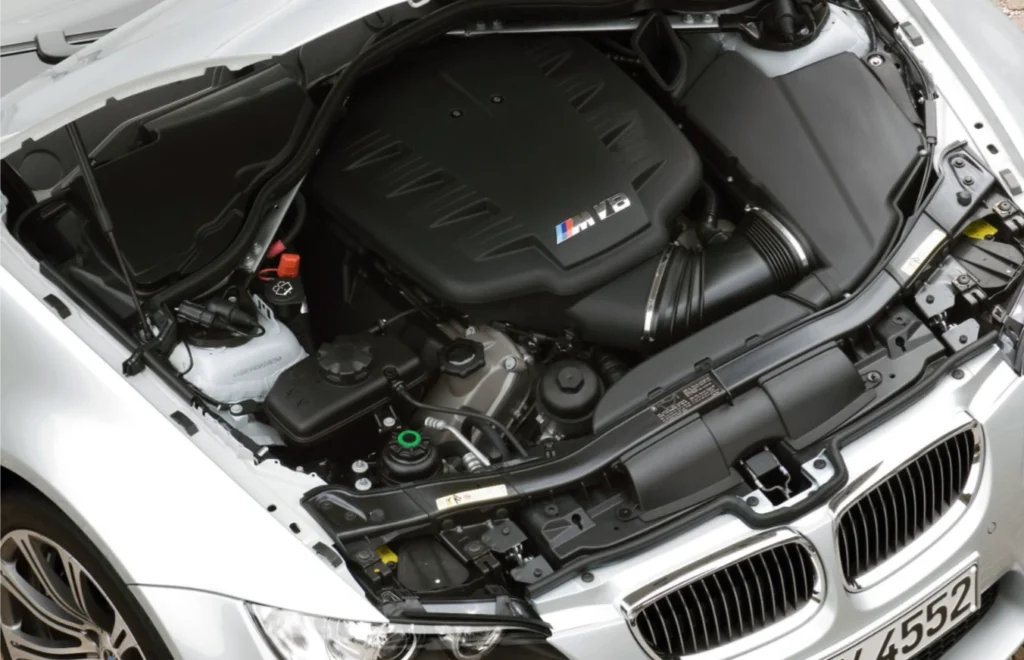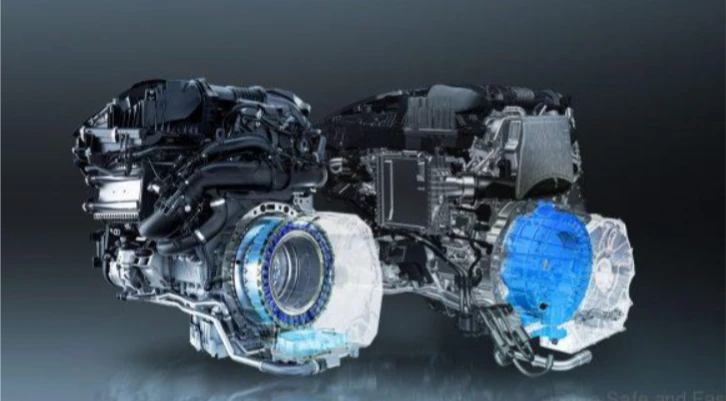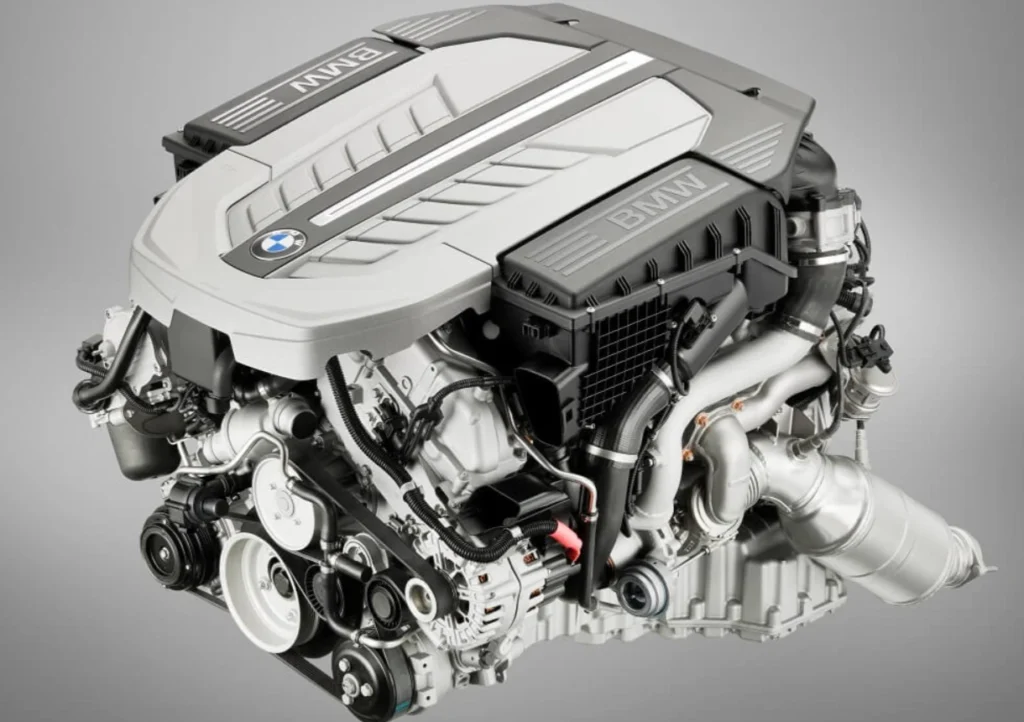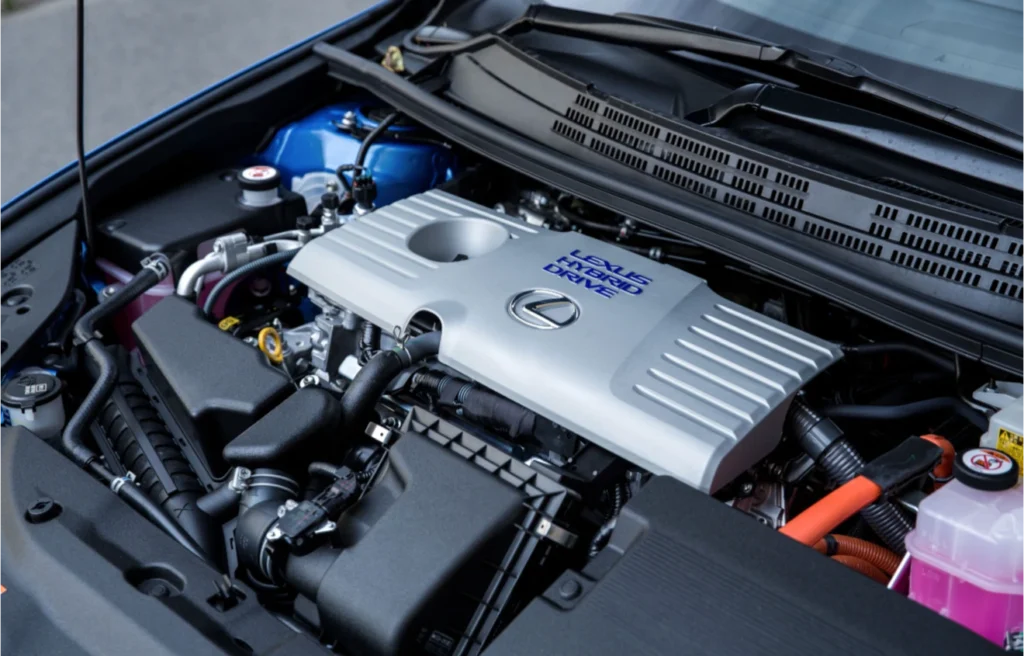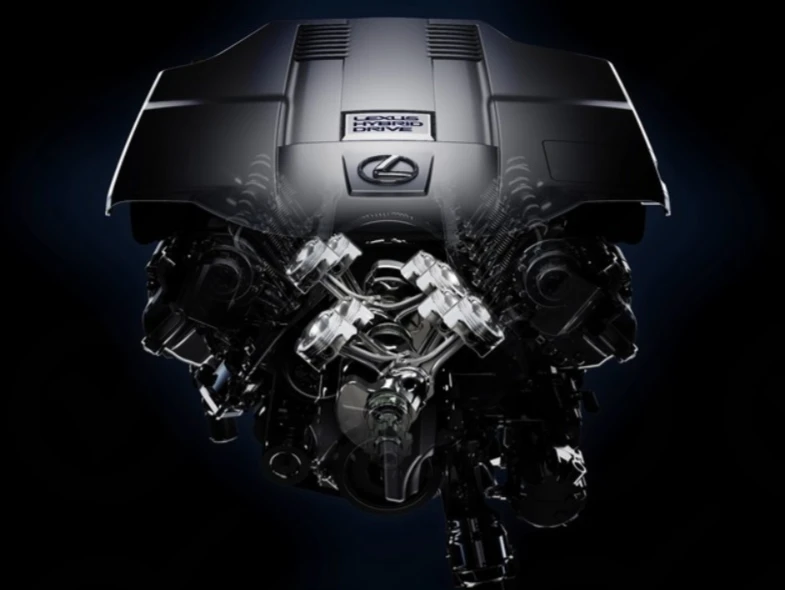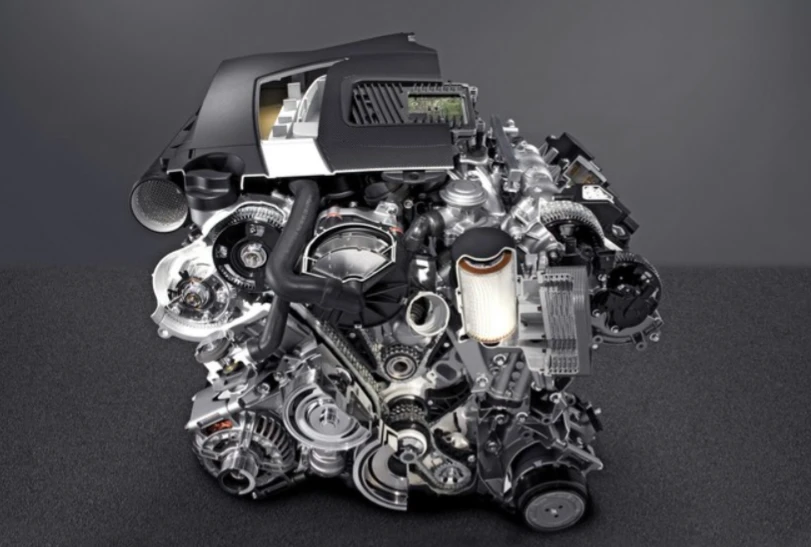A W16 engine is a sixteen-cylinder piston engine with four banks of four cylinders in a W configuration. W16 engines are rarely produced, with the notable exception of the Volkswagen Group 8.0 WR16 engine, which has been used since 2005 in the Bugatti Veyron, Bugatti Chiron and their related models.
How does a W16 engine work?
A W16 engine is effectively two narrow-angle VR8 engines (based on the VR6 design) mated at an included angle of 90 degrees on a common crankshaft. Each VR8 engine has two cylinder banks arranged at a 15-degree angle, forming a V shape. The W16 engine has four turbochargers, one for each cylinder bank, to boost the power output and efficiency.
The W16 engine that Volkswagen Group uses in its Bugatti models has a displacement of 8.0 L (488 cu in) and four valves per cylinder. The most powerful version of this engine, installed in the Bugatti Bolide, generates 1,361 kW (1,825 hp; 1,850 PS) at 7,000 rpm, and 1,364 lb⋅ft (1,849 N⋅m) of torque. This makes it one of the world’s most powerful production engines, capable of propelling the Bolide to a top speed of over 500 km/h (311 mph).
What are the advantages and disadvantages of a W16 engine?
A W16 engine has several advantages over other engine configurations, such as:
- It can produce more power and torque than a V12 or a V16 engine of the same displacement, due to the increased number of cylinders and turbochargers.
- It can fit in a relatively compact space, compared to a V16 engine, due to the narrow angle of the cylinder banks.
- It can achieve a high power-to-weight ratio, as the engine weighs only 400 kg (882 lb), which is less than some V12 engines.

However, a W16 engine also has some drawbacks, such as:
- It is very complex and expensive to manufacture, maintain and repair, due to the large number of components and the intricate design.
- It consumes a lot of fuel and emits a lot of emissions, due to the high displacement and the use of turbochargers.
- It produces a lot of heat and noise, which require special cooling and sound insulation systems.
Characteristics of the W16 engine
| Parameter | Value |
|---|---|
| Configuration | W-16 |
| Displacement | 8.0 L (488 cu in) |
| Cylinder bore | 86 mm (3.39 in) |
| Piston stroke | 86 mm (3.39 in) |
| Valvetrain | 64-valve, DOHC, four-valves per cylinder |
| Turbocharger | Quad-turbocharged |
| Fuel system | Electronic fuel injection |
| Oil system | Dry sump |
| Power output | 987–1,825 hp (736–1,361 kW) |
| Torque output | 922–1,364.5 lb⋅ft (1,250–1,850 N⋅m) |
| Dry weight | 400 kg (882 lb) |

What cars have a W16 engine?
As of 2024, the only cars that have a W16 engine are the Bugatti models, which include:
- Bugatti Veyron (2005-2015): The first production car to use the W16 engine, with a power output of 736 kW (987 hp; 1,001 PS) and a top speed of 408 km/h (254 mph).
- Bugatti Chiron (2016-present): The successor of the Veyron, with a power output of 1,103 kW (1,479 hp; 1,500 PS) and a top speed of 420 km/h (261 mph).
- Bugatti Divo (2019-present): A track-focused variant of the Chiron, with a power output of 1,103 kW (1,479 hp; 1,500 PS) and a top speed of 380 km/h (236 mph).
- Bugatti Centodieci (2021-present): A limited-edition tribute to the Bugatti EB110, with a power output of 1,176 kW (1,577 hp; 1,600 PS) and a top speed of 380 km/h (236 mph).
- Bugatti Bolide (2021-present): A track-only concept car, with a power output of 1,361 kW (1,825 hp; 1,850 PS) and a top speed of over 500 km/h (311 mph).
FAQ
- Q: How much does a W16 engine cost?
- A: The exact cost of a W16 engine is not publicly disclosed, but it is estimated to be around $200,000, which is more than the average price of a new car in the US.
- Q: How many W16 engines are there in the world?
- A: The number of W16 engines in the world is not known, but it is likely to be very low, as only a few hundred Bugatti cars have been produced since 2005, and each car has one W16 engine.
- Q: Is a W16 engine better than a V12 or a V16 engine?
- A: A W16 engine is not necessarily better than a V12 or a V16 engine, as each engine configuration has its own pros and cons. A W16 engine may have more power and torque, but it may also have more complexity and cost. A V12 or a V16 engine may have less power and torque, but it may also have less weight and fuel consumption. The choice of engine depends on the preferences and needs of the driver and the car manufacturer.






